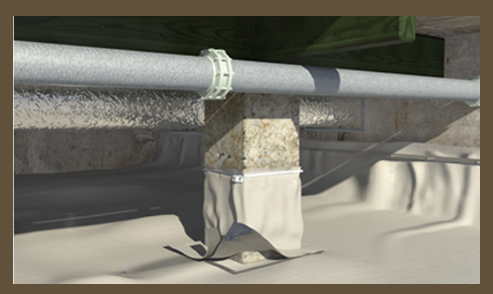Choosing the Right Crawl Space Liner: A Comprehensive Guide

Crawl space liners play a crucial role in maintaining the integrity and durability of your home's foundation. When it comes to selecting the appropriate liner thickness, factors such as moisture levels, environmental conditions, and local building codes need consideration. In this guide, we'll explore how to decide between a 10 mil and a 20 mil crawl space liner, understand the significance of vapor barrier classes, and what to do if the liner doesn't hold up.
Choosing Between 10 Mil and 20 Mil Liners:
- Moisture Control: If your crawl space is prone to high moisture levels or water intrusion, a thicker liner such as a 20 mil may offer better protection against moisture penetration.
- Durability: Thicker liners generally offer increased durability and resistance to tears, punctures, and other damage. If your crawl space is subject to heavy traffic or potential impacts, a 20 mil liner may be more suitable.
- Budget: Consider your budget constraints when selecting a liner thickness. While 20 mil liners provide enhanced durability, they typically come at a higher cost compared to 10 mil liners.
Significance of Vapor Barrier Classes: In accordance with the International Residential Code (IRC), vapor barriers are classified into three categories based on their permeability:
- Class I Vapor Barriers: These barriers have a perm rating of 0.1 or less and offer the highest level of moisture resistance. They are typically composed of non-porous materials such as polyethylene and provide effective moisture control in crawl spaces with high humidity levels.
- Class II Vapor Barriers: With a perm rating between 0.1 and 1.0, Class II barriers offer moderate moisture resistance. They are suitable for crawl spaces with moderate humidity levels and can help prevent moisture-related issues such as mold and mildew growth.
- Class III Vapor Barriers: These barriers have a perm rating between 1.0 and 10.0 and provide minimal moisture resistance. They are often used in climates with low humidity levels where moisture control is less critical.
What Happens if the Liner Does Not Hold Up? How Will You Know?
- Visible Damage: Signs of liner failure may include tears, punctures, or deterioration visible upon inspection.
- Increased Moisture Levels: If moisture levels in the crawl space rise despite the presence of the liner, it may indicate that the liner is not effectively preventing moisture intrusion.
- Mold and Mildew Growth: Excessive moisture in the crawl space can lead to mold and mildew growth on the liner surface and other structural components.
- Odors and Musty Smells: A musty odor emanating from the crawl space may indicate moisture-related issues caused by liner failure.
In conclusion, when choosing between a 10 mil and a 20 mil crawl space liner, consider factors such as moisture control, durability, and budget. Additionally, understanding vapor barrier classes defined by the IRC can help ensure compliance with building codes and standards. Regular inspection and maintenance of the crawl space liner are essential to identify any signs of damage or failure early and address them promptly.
Please visit the Crawl Space Vapor Barrier page here.


